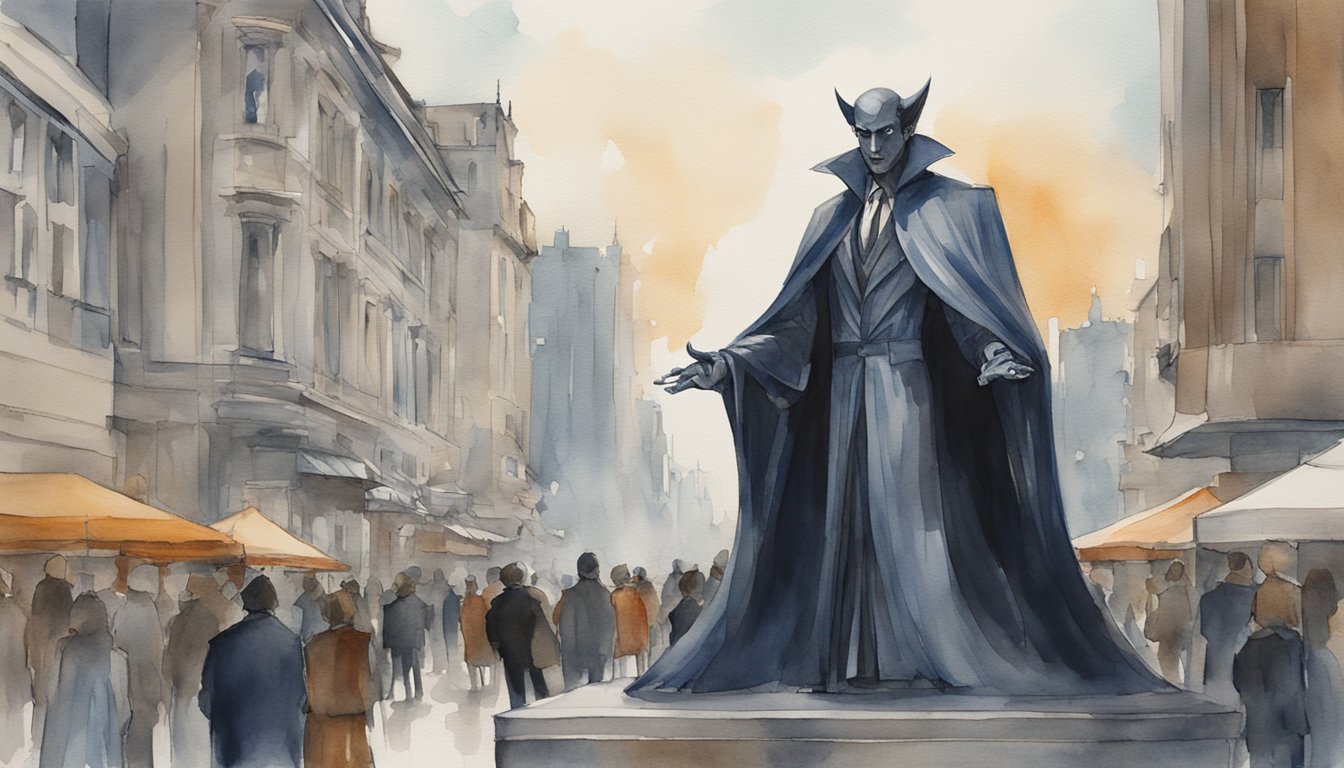Real Vampires and Historical Accounts
The belief in real vampires has a rich history punctuated by diseases often mistaken for vampirism and numerous tales from various cultures.
Rise of the Vampire Legend
Vampire legends likely began as a way to explain the mysteries surrounding death and misfortunes in the community. Specifically in Eastern Europe, tales emerged around entities that arose from the grave to harm the living, believed to be tethered to common fears like infectious diseases and unexplained deaths.
Diseases Misidentified as Vampirism
In the past, diseases like tuberculosis and rabies were sometimes misinterpreted as signs of vampirism. Symptoms of rabies, including sensitivity to light and garlic and the biting of others, mirrored the attributes of vampire lore. Porphyria, characterized by sunlight sensitivity and receding gums that give the appearance of longer fangs, further contributed to the confounding of disease with vampirism.
Famous Historical Cases
One of the most notable cases involved Mercy Brown from Exeter, Rhode Island, in the 19th century, where tuberculosis decimated families and led to the exhumation of bodies to look for signs of vampirism. In Europe, figures like Vlad the Impaler, also known as Dracula, have left a lasting impact on the legend due to their brutal historical actions.
Anthropological Perspectives on the Undead
Anthropologists like Paul Barber have dissected the vampire mythos, linking it to a misunderstanding of the body’s decomposition process, such as natural post-mortem bloating and bleeding. Archaeologists have uncovered graves in Bulgaria and Poland with preventative measures against suspected vampires, such as sickles across bodies or stones beneath chins to prevent the biting of the living.
Is There Any Connection Between Raccoons and Vampire Myths?
Exploring the connection between raccoons and vampire myths reveals intriguing tales. The “masked mammal essential facts” suggest that raccoons, with their nocturnal habits and clever behaviors, may have inspired stories of mysterious creatures. Their shadowy presence and striking appearance can easily evoke images of legendary beings that haunt the night.
Cultural Impact and Modern Representations

The vampire figure has evolved significantly over time, influencing literature, film, and modern culture, reflecting society’s changing fears and fascinations.
Literary Contributions to Vampire Mythos
The foundation of vampire fiction can be traced back to the early 19th century. Lord Byron’s personal physician, John Polidori, introduced the aristocratic vampire character with his short story “The Vampyre.” However, it’s Bram Stoker’s “Dracula” that solidified the image of the vampire in the public’s imagination. This novel set in Transylvania created a lasting archetype for vampire characters—Count Dracula, an immortal creature preying on the living. Carmilla, a novel by Sheridan Le Fanu, also shaped vampire mythos, introducing a female vampire and themes of seduction and fear. The literary tradition of vampire fiction continues with contemporary authors like Anne Rice and Stephenie Meyer, whose works, such as “Interview with the Vampire” and the “Twilight” series, have garnered massive audiences by giving the vampire mythos new dimensions.
Cinematic and Media Adaptations
Adaptations of literary vampire tales transformed the way these creatures are portrayed in popular culture. From “Nosferatu,” the haunting silent film adaptation of “Dracula”, to “Buffy the Vampire Slayer,” a television series blending horror, drama, and comedy, the vampire theme remains a strong visual and narrative force. Cinematic retellings expand the vampire’s reach, influencing and being influenced by society’s tastes and trends, especially during times like Halloween, where the fascination with creatures of the night climaxes. Stephen King’s contributions with stories like “Salem’s Lot” reinvigorated the horror genre, and the commercial success of these adaptations illustrates the vampire’s enduring allure.
Symbolism and Society’s Fascination
Vampires serve as powerful symbols reflecting society’s concerns, such as xenophobia, sexuality, and immortality. The vampire, often portrayed as a dark, enigmatic figure, can represent societal taboos, acting as both a cautionary tale and a vessel for exploring forbidden desires. This blend of allure and fear contributes to society’s unabating fascination with vampires. The cultural impact is vast, with the vampire becoming a metaphor for the other, the outsider, and often, the misunderstood.
Vampires in Contemporary Folklore and Belief
Despite their mythical nature, vampires maintain an active presence in contemporary folklore and, for some, as an aspect of personal identity. There are communities that identify with the vampire lifestyle, and places like New Orleans and Atlanta are known for their subcultures of self-proclaimed vampires. This real-life identification with vampire culture may incorporate elements from literature and cinema, while also giving rise to new interpretations and lifestyles based on the vampire myth. Highgate Cemetery in London even became the center of a vampire legend in the 1970s, showing how the myth continues to find footing in real-world locales.

